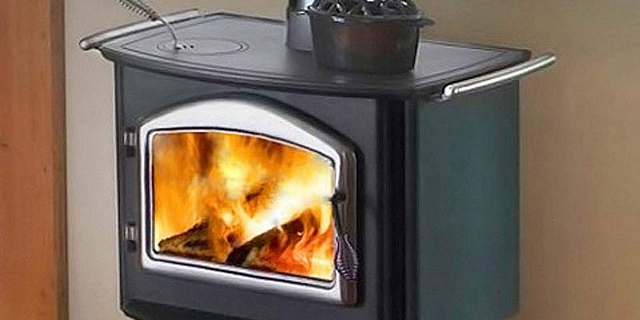What are you to do when the power goes out during a winter storm and you have a family to keep fed? Well if you have a wood stove you are in luck. Wood stoves will not only keep you warm during a power outage but they will also give you a source to cook on if there is no alternative for your family. Cooking on a wood stove can also be a great option for cooking everyday meals during the heating season. I mean you will have them going anyways to heat your home so might as well get the most out of it if you can.

What can you cook on a wood stove?
Cooking on a wood stove is really not much different than cooking on a stove top except for the fact that it is harder to control the heat output. You can make homemade soups and chili or you can even fry up a steak and eggs for breakfast. To make breads or deserts you can create an oven right on the top of the wood stove as well by placing a large pan over the pan you will be cooking the desert or bread in.
There are 7 easy steps to follow when preparing to cook on a wood stove:
Step 1: Build a good fire in your wood stove with the dampers open.
Step 2: Get all of your cooking gear ready. Pots, pans, utensils, etc.
Step 3: Gather all ingredients that will be needed for what you will be cooking. If there is any prep that needs to be done this will be the time to do it while your stove is heating up.
Step 4: Place a pot or kettle of water on the wood stove to heat up. This can be used as water for making soup stock, coffee, tea, or even washing up the dishes that you will be dirtying.
Step 5: Check to see if the wood stove is ready by dropping a drop of water onto the surface. If the water sizzles and kind of scoots about the surface the stove is good to go.
Step 6: This is the step to which you will be doing the actual cooking.
- To make soup, use a large cast iron or heavy duty steel pot, let it heat up well. Keep the stove hot by adding wood as needed and opening/closing the damper to try to maintain a temperature. Add boiling water or soup stock just as you would when cooking on a normal stove top. Then follow the recipe just like you would adding your ingredients and such. When cooking on a wood stove I like to leave my soups or chili going at a normal heating temperature for most of the day, just like cooking in a crock pot.
- To fry on the wood stove top, use a thin pan. Cast iron or heavy duty steel pans will take forever to heat up. They work great for soups and stews left all day, but not great for frying. If you don’t have a thin frying pan or saucepan to use you can use a heavy-duty aluminum foil! Set the pan on the stove, oil it up well. Test for the heat with a drop of water and get to frying.
- To bake different types of foods, breads, or deserts – Get all of the ingredients ready again just like you would for baking in a conventional oven (cake, bread) or in foil (vegetables). If the top of the stove is extremely hot put foiled items on a trivet or crumpled foil to keep it up off the hot stove top. Then cover the pan or foil with a larger pan that goes all the way down to the wood stove top. Big metal bowls will also work for this.
Step 7: Once you are completely finished cooking turn the dampers down and allow the wood stove to cool to normal operating temperatures. I would suggest leaving a pot of water on the wood stove just in the case that someone would like more coffee or tea.
Tips to keep in mind when cooking on a wood stove
- If you add cold water to the pot it will take forever to heat up.
- Keep a lid on the hot water pan so that you don’t have a boil over or create a steam room.
- Take your time and cook easy, little items until you get the hang of it and then try some more advance recipes on the wood stove.
- Keep some salt or baking soda on hand in the case of a grease fire while frying.
- The most ideal wood stove to cook on is a non-lined cast iron wood stove.
- It will be hard to reach temperatures high enough to cook on with a brick line or catalytic wood stove. Wood furnaces are also not good for cooking on.
- Have some heavy duty pot holders for removing the pans. Cast Iron gets extremely hot and all of the handles will be hot.







